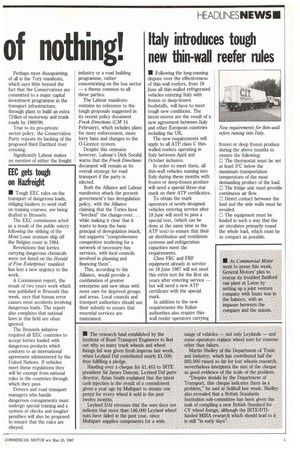Italy introduces tough new thin-wall reefer rules
Page 7

If you've noticed an error in this article please click here to report it so we can fix it.
• Following the long-running dispute over the effectiveness of thin-wall reefers, from 18 June all thin-walled refrigerated vehicles entering Italy with frozen or deep-frozen foodstuffs, will have to meet tough new conditions. The latest moves are the result of a new agreement between Italy and other European countries including the UK.
The new requirements will apply to all ATP class C thinwalled reefers operating in Italy between April and October inclusive.
In order to meet them, all thin-wall vehicles running into Italy during these months with frozen or deep-frozen produce will need a special three-star mark on their ATP certificates.
To obtain the mark operators of newly-designed vehicles entering service after 18 June will need to pass a special test, (which can be done at the same time as the ATP test) to ensure that their air distribution and ventilation systems and refrigeration capacities meet the requirements.
Class FRC and FRF equipment already in service on 18 June 1987 will not need this extra test for the first six years after entering service — but will need a new ATP certificate with the special mark.
In addition to the new requirements the Italian authorities also require thinwall reefer operators carrying frozen or deep frozen produce during the above months to ensure the following:
I: The thermostat must be set at least 5°C below the maximum transportation temperature of the most demanding product of the load.
▪ The fridge unit must provide continuous air flow.
I: Direct contact between the load and the side walls must be avoided.
O The equipment must be loaded in such a way that the air circulates primarily round the whole load, which must be as compact as possible.




























































































